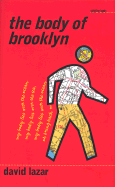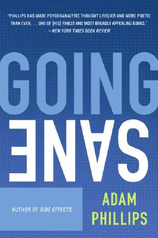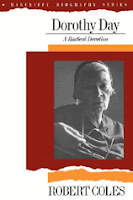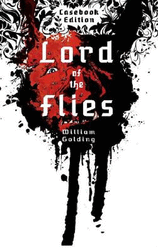 Mary Cappello
Mary Cappello is a regular contributor to the world of literary nonfiction and experimental prose. She is the author of
Night Bloom: An Italian/American Life (Beacon Press), and most recently, the Los Angeles Times bestselling book-length essay on “awkwardness,”
Awkward: A Detour (Bellevue Literary Press).
Swallow: Foreign Bodies, Their Ingestion, Inspiration and Extraction in the Age of Chevalier Jackson will appear from The New Press in 2010, and
Called Back: My Reply to Cancer, My Return to Life, is coming out with Alyson Books this October.
A few days ago I asked her what she was reading. Her reply:
Currently, I’m reading a book that is, sadly, out of print: James Scully’s Line Break: Poetry as Social Practice, originally published by Bay Press. I’ve been rediscovering it because of classes I’m teaching in poetry this semester, and I still find it to be one of the most lucid, bracing, important and teachable collections to  address the lines that too often set poetry apart from the political. I’m also happily re-reading some favorite essayists this week—most notably, the wildly dense, heightened sentences of William Gass’ Tests of Time, in particular his essay on lists, as I ask my students to articulate the differences between list poems and facebook lists. Once back inside of this collection, I found myself returning to Gass’ still unsurpassed essay on Gertrude Stein—“The Geography of the Sentence” in The World within the Word. Then, I pined for an era in which the book review was shot through with readerly prowess, erudition, conversation, for the days, too, when it was a form more writers happily and necessarily inhabited: the book review as art. Discussing this with a colleague this week, he put the two volumes of Virginia Woolf’s Common Reader into my lap, and I found myself re-reading one of the magnificent essays therein—on how to read a book. I read it on the spot while my friend gave another guest a tour of the orchids he cultivates. Orchids or Woolf’s Common Reader? It’s a tough choice, but maybe not if you love the intricate beauty of essays as much as I do.
address the lines that too often set poetry apart from the political. I’m also happily re-reading some favorite essayists this week—most notably, the wildly dense, heightened sentences of William Gass’ Tests of Time, in particular his essay on lists, as I ask my students to articulate the differences between list poems and facebook lists. Once back inside of this collection, I found myself returning to Gass’ still unsurpassed essay on Gertrude Stein—“The Geography of the Sentence” in The World within the Word. Then, I pined for an era in which the book review was shot through with readerly prowess, erudition, conversation, for the days, too, when it was a form more writers happily and necessarily inhabited: the book review as art. Discussing this with a colleague this week, he put the two volumes of Virginia Woolf’s Common Reader into my lap, and I found myself re-reading one of the magnificent essays therein—on how to read a book. I read it on the spot while my friend gave another guest a tour of the orchids he cultivates. Orchids or Woolf’s Common Reader? It’s a tough choice, but maybe not if you love the intricate beauty of essays as much as I do.
 In the realm of the contemplative—a state of mind that I aspire to—I’ve been happily transported by, again, a recent re-reading of Argentinean Antonio Porchia’s aphorisms (entitled Voices, and translated by W.S. Merwin), as well as a collection of poems I’m reading for the first time by Melissa Hotchkiss titled Storm Damage. Porchia’s aphorisms linger like after-images, they’re nearly spectral in their invocations and their silences, and I enjoy the demand they make on a reader to sit inside of a present absence:
In the realm of the contemplative—a state of mind that I aspire to—I’ve been happily transported by, again, a recent re-reading of Argentinean Antonio Porchia’s aphorisms (entitled Voices, and translated by W.S. Merwin), as well as a collection of poems I’m reading for the first time by Melissa Hotchkiss titled Storm Damage. Porchia’s aphorisms linger like after-images, they’re nearly spectral in their invocations and their silences, and I enjoy the demand they make on a reader to sit inside of a present absence:
“I have scarcely touched clay and I am made of it.”
“A great deal that I no longer continue, within myself, continues there on its own.”
“Chimeras come singly and leave accompanied.”
“This world understands nothing but words, and you have come into it with almost none.”
 I’m also loving Hotchkiss’ poems for the distillate image work they perform, for their kinship with photography, and their invocation of lines from Emily Dickinson.
I’m also loving Hotchkiss’ poems for the distillate image work they perform, for their kinship with photography, and their invocation of lines from Emily Dickinson.
Subsequently, I’m reading Brenda Wineapple’s White Heat: The Friendship of Emily Dickinson and Thomas Wentworth Higginson. There must be something wrong with the way I’m living my life because I feel as though I’d like to read this book cover to cover, from start to finish, with no interruptions. Wineapple is such a fabulous biographer and reader of literary texts, a deft weaver of life and work, and I’m such a Dickinson fan—but so far I’ve only read the first evocative chapter. (I hope you’ll check back in with me this summer!)
I recently discovered the work of nonfiction writer and film specialist, David Lazar, the title essay of whose Body of Brooklyn I found to be exquisitely unnerving, really  discomfiting for its investigation of the author’s body, of a fatness a body never outgrows even if it thins, of gender and excess and craving. Lazar’s queer sensibility (that’s what I call it) and filmic bent appeals to me, and I look forward to reading more of him, having come to his work last semester through another marvelous piece of his in Truth in Nonfiction—an essay titled “Occasional Desire: On the Essay and the Memoir,” that is an inspired and refreshingly rigorous accounting of non-fiction’s, and especially the essay’s, contemporary possibilities as a genre.
discomfiting for its investigation of the author’s body, of a fatness a body never outgrows even if it thins, of gender and excess and craving. Lazar’s queer sensibility (that’s what I call it) and filmic bent appeals to me, and I look forward to reading more of him, having come to his work last semester through another marvelous piece of his in Truth in Nonfiction—an essay titled “Occasional Desire: On the Essay and the Memoir,” that is an inspired and refreshingly rigorous accounting of non-fiction’s, and especially the essay’s, contemporary possibilities as a genre.
The most ecstatic experience I’ve had with a book turning into the New Year—that isn’t what you asked, you asked what I was currently reading, but even though I’ve finished reading this book, I try to  live as though I’m currently reading it, to keep it close for its intelligence and intimacy—is Susan Sontag’s recently published early journals and note-books, Reborn, edited by her son, David Rieff. I think this book can enter a pantheon of books of queer becoming, and it’s thrilling to watch in its pages Sontag’s cultivation, from a very young age, of a writing self and an aesthetic. Of course one also can’t help being floored by the questions and insights she fashions as a mere 16 year old! I think this book can open up a discussion of the diary as such, and the idea and utility of the diary in Sontag’s singularly brilliant hands. I found it sad to discover Amazon reader reports and more formal reviews there too whose primary point seems to be to defend Sontag as bisexual, over and against, lesbian. I might be over-stating the case, but on one hand, it makes one all too acutely aware of the power of identity politics and the intensities of homophobia. And it also misses so much that is important about this book. Has anybody read it?
live as though I’m currently reading it, to keep it close for its intelligence and intimacy—is Susan Sontag’s recently published early journals and note-books, Reborn, edited by her son, David Rieff. I think this book can enter a pantheon of books of queer becoming, and it’s thrilling to watch in its pages Sontag’s cultivation, from a very young age, of a writing self and an aesthetic. Of course one also can’t help being floored by the questions and insights she fashions as a mere 16 year old! I think this book can open up a discussion of the diary as such, and the idea and utility of the diary in Sontag’s singularly brilliant hands. I found it sad to discover Amazon reader reports and more formal reviews there too whose primary point seems to be to defend Sontag as bisexual, over and against, lesbian. I might be over-stating the case, but on one hand, it makes one all too acutely aware of the power of identity politics and the intensities of homophobia. And it also misses so much that is important about this book. Has anybody read it?
 I try to read anything and everything that essayist Adam Phillips, the British psychoanalyst, and editor of the new Penguin translations of Freud writes. I can spend days, weeks, even years inside of a single sentence of Phillips both for their import and their startle, and I think I’ve been unconsciously riffing on his melodies for decades. His recent Going Sane has some of the most original thinking on adolescence and the adolescent I’ve read anywhere.
I try to read anything and everything that essayist Adam Phillips, the British psychoanalyst, and editor of the new Penguin translations of Freud writes. I can spend days, weeks, even years inside of a single sentence of Phillips both for their import and their startle, and I think I’ve been unconsciously riffing on his melodies for decades. His recent Going Sane has some of the most original thinking on adolescence and the adolescent I’ve read anywhere.
I’m currently writing a book based on an enormous collection of swallowed objects, otherwise known as “foreign bodies,” that are housed in a set of drawers in Philadelphia’s Mutter Museum. The “things” were expertly removed, non-surgically, and in most cases sans anesthesia, then kept, framed, and meticulously documented by a pioneering laryngologist, Chevalier Jackson, in the early 20th century. My book (forthcoming from The New Press) is both a psycho-biography of the father of endoscopy, the eccentric genius, Chevalier Jackson, and an attempt to re-attach numerous life-stories, the actual case studies and social contexts that are part and parcel of the collection but that Jackson in many ways detached both himself and the objects from. On some level, the book is very much a (multi-genre) study in desire at the site of the mouth. This week, as I compose a chapter on the phenomenon of (hysterical) women who swallowed huge amounts of hardware in the early 20th century, I’m reading selected chapters from three of Ian Hacking’s books, The Social Construction of What, Rewriting the Soul, and Mad Travelers, in order to aid my understanding of the relationship between particular historical moments and pathological repertoires. I’ve also been reading and re-reading Elizabeth Wilson’s fascinating essay, “Gut Feminism” (differences: a journal of feminist cultural studies) in which she challenges the Freudian notion of hysteria (especially in the form of eating disorders) as a kind of psychosomia and turns instead to Ferenzci who would have us consider the body as a thinking entity, not merely a conduit for states of mind. I’ve been dipping, too, inside of the newest in a series of photographic
and an attempt to re-attach numerous life-stories, the actual case studies and social contexts that are part and parcel of the collection but that Jackson in many ways detached both himself and the objects from. On some level, the book is very much a (multi-genre) study in desire at the site of the mouth. This week, as I compose a chapter on the phenomenon of (hysterical) women who swallowed huge amounts of hardware in the early 20th century, I’m reading selected chapters from three of Ian Hacking’s books, The Social Construction of What, Rewriting the Soul, and Mad Travelers, in order to aid my understanding of the relationship between particular historical moments and pathological repertoires. I’ve also been reading and re-reading Elizabeth Wilson’s fascinating essay, “Gut Feminism” (differences: a journal of feminist cultural studies) in which she challenges the Freudian notion of hysteria (especially in the form of eating disorders) as a kind of psychosomia and turns instead to Ferenzci who would have us consider the body as a thinking entity, not merely a conduit for states of mind. I’ve been dipping, too, inside of the newest in a series of photographic  books from the Mutter Museum, Mutter Museum: Historic Medical Photographs edited by Laura Lindgren and with an introduction by the late curator, Gretchen Worden. Over and against photographs of medical anomalies that necessarily constitute much of this book, I find myself dwelling with images termed “photomicrographs.” Reminiscent of the sort of beautiful, and enchanting, anomalous, and metamorphic work one might find in the Museum of Jurassic Technology, these images are representations of organic entities, like the blood vessels of the human retina, that, under the microscope and then magnified, resemble landscape paintings.
books from the Mutter Museum, Mutter Museum: Historic Medical Photographs edited by Laura Lindgren and with an introduction by the late curator, Gretchen Worden. Over and against photographs of medical anomalies that necessarily constitute much of this book, I find myself dwelling with images termed “photomicrographs.” Reminiscent of the sort of beautiful, and enchanting, anomalous, and metamorphic work one might find in the Museum of Jurassic Technology, these images are representations of organic entities, like the blood vessels of the human retina, that, under the microscope and then magnified, resemble landscape paintings.
 As I prepare to host a reading by Jan Clausen and Jane Lazarre at the University of Rhode Island on March 5th, I’m reading Clausen’s new collection of poems, From a Glass House, and Lazarre’s breast cancer memoir, Wet Earth and Dreams. I started to turn down the corners of pages in these books as I read them, but it got to the point where I was turning down the corner of every page! Clausen brings together lyricism and experimentation with language, with the result of finely calibrating the political nature of being.
As I prepare to host a reading by Jan Clausen and Jane Lazarre at the University of Rhode Island on March 5th, I’m reading Clausen’s new collection of poems, From a Glass House, and Lazarre’s breast cancer memoir, Wet Earth and Dreams. I started to turn down the corners of pages in these books as I read them, but it got to the point where I was turning down the corner of every page! Clausen brings together lyricism and experimentation with language, with the result of finely calibrating the political nature of being.
As someone who has been through her own breast cancer ordeal, and who also has written out from it, I’ve read a great number of books written in the last 20 years that have emerged out of the epidemic. There are numerous different genres of breast cancer book, each of which serves, I  think, different complex purposes, different readerships, and aims. My favorite are books like Lazarre’s—books that one reads for the way they are written as much as for what they are ostensibly “about.” Books that stop me in my tracks or inspire me because of the shape of their sentences, which is to say, the shape of the feeling mind on the page. Lazarre’s book has a commanding clarity about it, as well as a wisdom and purity matched by the painful and nearly unspeakable material she brings into one place (the book deals not strictly with breast cancer, but illness as a matrix of feelings and experiences, and more specifically, the challenge of dealing with forms of depression and a cancer diagnosis simultaneously). Perhaps I should add here, too, that one of the books that most spoke to me in the midst of my treatment ordeal was Miriam Engelberg’s Cancer Made Me A Shallower Person, a
think, different complex purposes, different readerships, and aims. My favorite are books like Lazarre’s—books that one reads for the way they are written as much as for what they are ostensibly “about.” Books that stop me in my tracks or inspire me because of the shape of their sentences, which is to say, the shape of the feeling mind on the page. Lazarre’s book has a commanding clarity about it, as well as a wisdom and purity matched by the painful and nearly unspeakable material she brings into one place (the book deals not strictly with breast cancer, but illness as a matrix of feelings and experiences, and more specifically, the challenge of dealing with forms of depression and a cancer diagnosis simultaneously). Perhaps I should add here, too, that one of the books that most spoke to me in the midst of my treatment ordeal was Miriam Engelberg’s Cancer Made Me A Shallower Person, a  book that I love for its existential buoyancy, and that Barbara Ehrenreich’s essay, “Welcome to Cancerland,” was also enormously inspiring—it’s a singularly brilliant critique of breast cancer culture that one feels should be required reading!
book that I love for its existential buoyancy, and that Barbara Ehrenreich’s essay, “Welcome to Cancerland,” was also enormously inspiring—it’s a singularly brilliant critique of breast cancer culture that one feels should be required reading!
Looking back over my narrative of current reading, I realize that it’s mostly poetry and nonfiction that I’m currently reading, until I remember that I’ve been reading a great deal of fiction of writers who are part of my writing community in Providence. I’m almost always reading manuscripts of a number of interlocutors, and that’s especially exciting when their work exceeds so much of what’s in print. Then I feel as though I’m caught up in a clandestine, underground reading movement. I’ve been reading Russell Potter’s (author of Arctic Spectacles), The Panoramist, an historical novel rife with Victoriana, the Crystal Palace, and the history of viewing devices, a labyrinthine mystery with routes to and from visual technologies of the past and present; Karen Carr’s (fiction writer, essayist, and cultural critic) eerie and intensely lyrical, Octogirl, a novel in the tradition of Angela Carter focused on a girl whose real body is a mere cover for her true body—that of an octopus; and Jean Walton’s (Fair Sex, Savage Dreams) All Fine Motel, an understated and edgy realist novel set in a 1970s working class suburb of British Columbia, and rife with local, national, and international, as well as “domestic” politics as a context for a 13 years old girl’s coming of age. The girl lives in an A-frame that is part of the motel her family runs on the King George Highway. Yesterday, I read 18 new poems by poet, Penelope Cray, and I was entirely taken with the consummate sensibility at work in them—their other-worldly, attentive, absurdist, and embodied force. I hope this writing, and these books will find their way into the public domain soon!
Cabinet, that wondrously multi-disciplinary journal of art, science, and ideas, is stacked by my bedside, and I’ve been working my way through back issues on such subjects as “Magic,” “Futures,” “Sloth,” and “The Average.”
Excerpts from Cappello's
Called Back will appear in an upcoming issue of
The Georgia Review and in the Fall season’s
Seattle Review, special issue on “Death,” edited by David Shields. Some

of Cappello’s recent essaying addresses Gunther von Hagens’
bodyworlds exhibit (in
Salmagundi); sleep, sound and the silence of silent cinema (in
Michigan Quarterly Review); the psychology of tears (in
Waterstone Review); and the uncanny dimensions of parapraxis and metalepsis (in
Interim). Cappello was the recipient of The Lange-Taylor Prize from Duke University's Center for Documentary Studies to document the lives of new immigrants to Italy; The Bechtel Prize for Educating the Imagination from Teachers and Writers Collaborative for her essay, "Can Creative Writing Be Taught?"; and, her essays have received Notable Essay of the Year Citations in
Best American Essays. A former Fulbright Lecturer at the Gorky Literary Institute in Moscow, Russia, Cappello is Professor of English and Creative Writing at the University of Rhode Island. Her latest book-length project on a single theme is a foray into sound and mood, tentatively titled
A Book of Moods.
Learn more about the author and her work at
Mary Cappello's website.
--Marshal Zeringue
 Michelle Boisseau is professor of English at the University of Missouri-Kansas City where she also serves as associate editor of BkMk Press.
Michelle Boisseau is professor of English at the University of Missouri-Kansas City where she also serves as associate editor of BkMk Press.I read it within his Collected Poems and in the Library of America edition, and rereading it again I was bathed in its beauty anew. People who don't know what to make of poetry in general and with "difficult" poetry in particular miss out when they don't just plunge in and enjoy the luscious language of poetry the way they enjoy the colors in Matisse or the wit in Paul Klee. Saturating yourself with the poetic imagination of a great poet, to paraphrase Stevens, naturalizes you to the poet's work and you allow it to enter you with its splendors. If you don't understand everything, so what? Stevens didn't understand it all, either!--that's why he had to write poems.
Latin poets: to call attention to the foibles, ghastliness, and hilarity of their age, and to do it bravely, for it meant life or death or exile. Schloss speaks as an exile in the strange land where we find ourselves: our times. I also just finished the brand new book by the young poet Randall Mann, Breakfast with Tom Gunn, an outrageous and gorgeous and side-splitting collection of poems. Mann writes exquisite formal poems, and they crackle on the page. If Mann were writing these in prose the authors of Prop 8 in California would figure out a new proposition to hush him up. As is, he flies under the radar, writing poetry that is harrowing, sharp, and for adults.
not only the life of a fascinating American writer but carries us vividly into the world of postwar New York. Images of this era seem to be all over pop culture these days and usually they're just not accurate depictions of the era--Mad Men and Revolutionary Road are entertaining and their style values very fine, but when the culture only has images from pop culture of the era--we lose a sense of how literate and book-oriented the era was, how publishers were interested in great writing and were happy to support it. And of course, there was then a reading public which was substantial, considered, and unafraid of the mind. Daugherty's book is an act of love and a credit to Barthelme, an imperfect man who strove in striving times.




















































